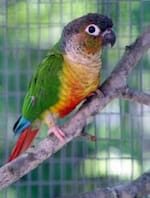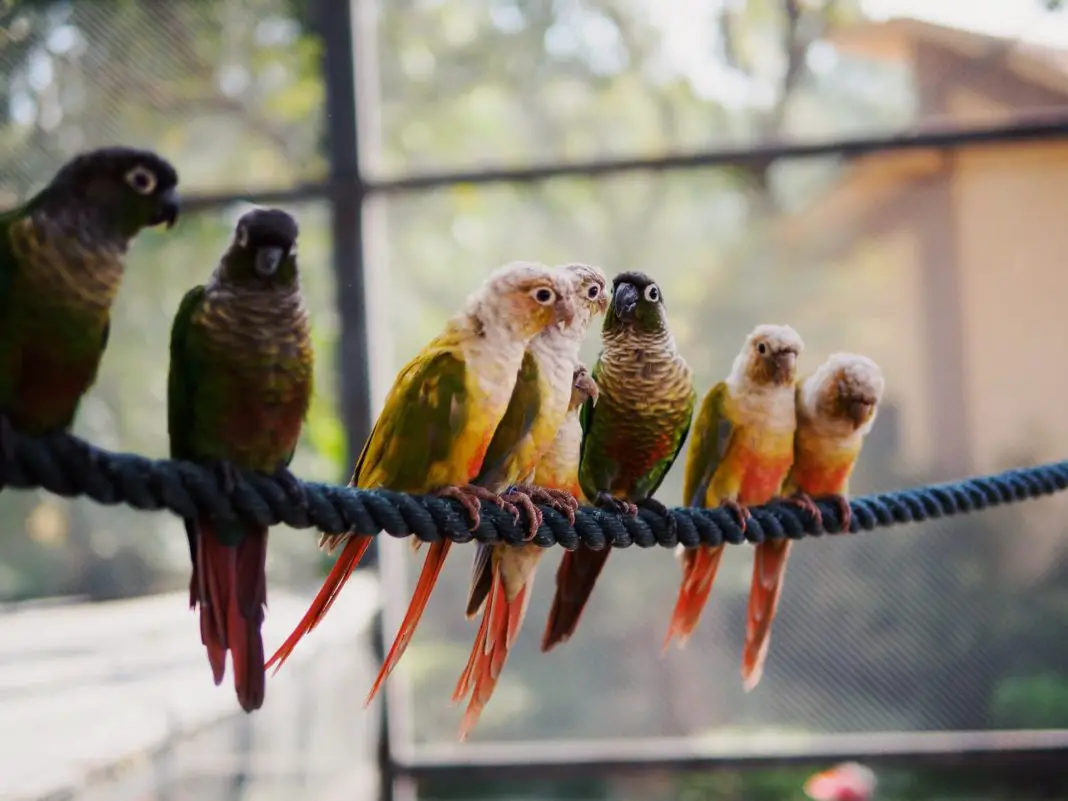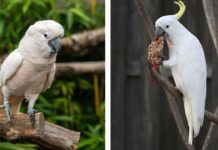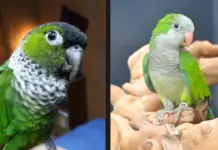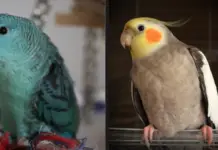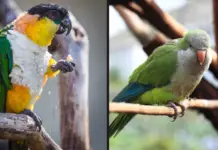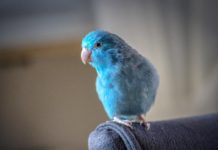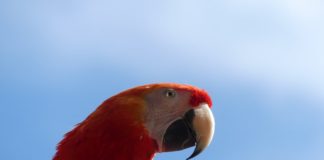Quick links:
- Green cheek conure lifespan
- Green cheek conure size
- Green cheek conure colors
- Can green cheek conures talk?
- Green cheek conure diet
- Personality
- Green cheek parakeet health
- Suncheek green cheek conure
- Turquoise Green Cheek Conure
- Green cheek pineapple conure
- Mint green cheek conure
- Cinnamon green cheek conure
- American dilute green cheek conure
- Yellow sided green cheek conure
The green cheeked parakeet (conure) is a bird species native to the south American forests of Brazil, Argentina, Bolivia, and Paraguay. The green cheeked parakeet is a popular bird for novices, because of its lower price range and temperament, compared to other parakeets.
Green cheek conure lifespan
The green cheek parakeet (conure) has a lifespan of around 30-40 years if given a good quality of life. Unfortunately, there are green cheek parakeets that are neglected by their owners, leaving them with a far shorter lifespan of around 10 years.
Green cheek conure size
Weighing between 60 to 80g. The green cheek parakeet is roughly around 10in length (including tail).
Green cheek conure colors
The most common colors found on the green cheek parakeet are green, with a dark grey-colored head, along with a maroon-colored tail and blue wing feathers. Their beak is dark grey, along with a red area around their chest.
Can green cheek conures talk?
The green cheek conure is an intelligent bird, and although they can be taught how to talk, their vocabulary is restricted compared to other pet birds. As every bird has their own strengths and abilities and it is possible to come across a green parakeet that talks a lot. It’s also important to note that they speak with a gravelly noise, and therefore can be harder to make out.
Other than talking, the green cheek parakeet is known for being relatively quiet, compared to other conure species.
Green cheek conure diet
Pellets can make up around 60% of the bird’s diet. When looking for pellets, it is common practice to avoid pellets that are colored, because of the unnecessary sugars and additives that they contain.
Seeds will make up around 10% of their diet. They can be fed a high-quality mix that contains different kinds of seeds (Sunflower seeds can be fed as a treat). Seeds mixes can come as a ball, which green cheek conures love, as they have busy beaks and will make it more enjoyable for them. Green cheek conures also love fruit, but fruit should only be given in moderation.
Recommended seeds:
- Millets
- Canary seeds
- Flax
When you’re feeding fruits or vegetables, make sure to only leave the fruit or vegetables for a few hours, preventing the fresh food from becoming bad. It’s always best to buy your fruit and vegetables from a local market rather than a large shopping chain. You want to prevent any additives or pesticides used in the growing process. Before giving your fruit and veg to your parakeet, make sure to give them a quick water wash.
Vegetables:
- leafy greens
- peas
- peppers
- soybeans
- sprouts
- squash
- broccoli
- carrots
- cauliflower
- celery
- asparagus
Fruits:
- melon
- orange
- pineapple
- apple
- banana
- berries
Remember that it’s important that your green cheek parakeet has constant access to fresh water at all times. Water should be cleaned daily.
Personality
The green cheeked parakeet has a great personality and loves to play and interact with its owner. They can normally be seen hanging upside down, walking around the cage bars. This bird is a great addition to a family and is great with children as they are good-natured and friendly and intelligent.
Important note: It’s important to know that when the green cheeked parakeet is young, they will probably go through a biting phase, like other birds.
Green cheek parakeet health
It’s important to know some potential health problems that your green cheek conure may encounter.
Parakeets (conures) can be prone to have depression when their mental wellbeing isn’t good. Some of the more common signs of depression can include your parakeet screaming more than normal, plucking feathers from their body, and in extreme conditions even try self-mutilation.
As a bird owner, it is important to understand your birds personality, as parakeets/conures are good at hiding symptoms of sickness relatively well. Understanding unusual and subtle signs can help you in deciding to see your local vet.
Mutations
In addition to the normal green cheeked parakeets green, yellow and red combination, there are also color mutations that can be found in some captive green cheeked parakeets.
Suncheek green cheek conure
This mutation of colors comprises platinum blue flight feathers, bright orange or red tail feathers, an orange/golden yellow chest and the head is light in color. The feet and beak are more of a lighter white color along with ruby red eyes.
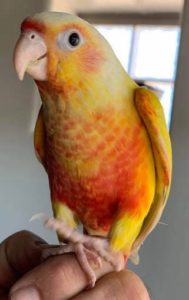
Turquoise Green Cheek Conure
The turquoise green cheek parakeets are typically larger compared to the other mutations. Chest feathers consist of a greyish tone along with the feathers on the tail. The plumage is a blue to green color.
Green cheek pineapple conure
The pineapple mutation has a yellow and cinnamon combination, the head is a light cinnamon color. The head has a tan color, on their back they have a lime-green color, with a bright-colored chest.
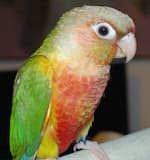
Mint green cheek conure
They have a plumage which is a pastel color, along with a silver-colored head and platinum-colored tail feathers. Their eyes, beak, and feet are dark.
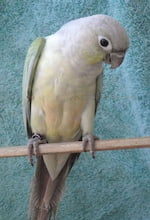
Cinnamon green cheek conure
The plumage is lime green with a light, almost pale tone to their feathers. They have a tanned head, along with a light maroon color compared to the more common green cheeked parakeets. The feet and beak are light in color, along with ruby red eyes.

American dilute green cheek conure
Green cheek parakeets with this mutation have a light cream plumage. Similar to the cinnamon mutation, the feet and beak are a dark bluish dark color, with dark eyes.

Yellow sided green cheek conure
This mutation is like the more common green cheek color. Their color differs with a brightly colored chest, along with a maroon to red-colored tail. The eyes, beak, and feet are dark in color.
